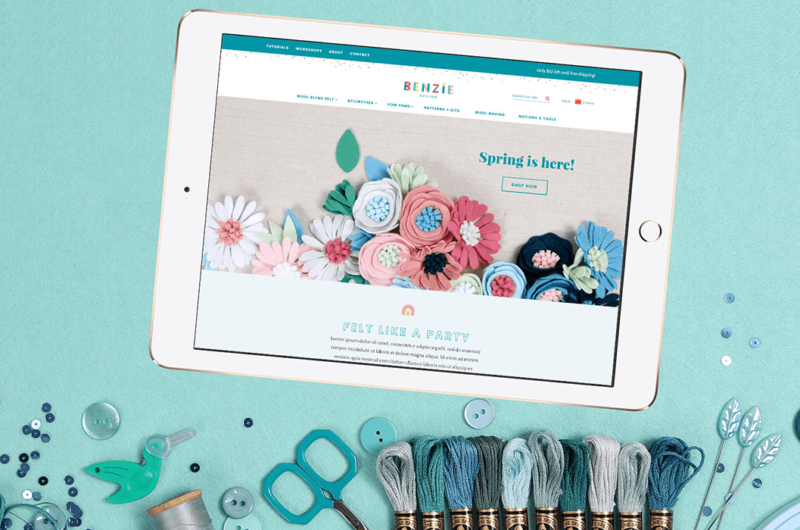
Hopefully you have a good idea of your target customer, the niche you fulfill and what makes your business unique within the marketplace – good! That information is the first step into helping you better define who you’re marketing to and where to reach them, so you can narrow things down from the broad scope of “everyone.”
Even if you truly believe everyone could benefit from what you have to offer in some way, it’s just not possible to market effectively to everyone – you have to narrow the field down and get more specific in order to really take your business where you want it to go. Here is how to do that.
Narrowing down your niche
The best way to narrow down your target market is to think about not only the niche of customers you could attract who would be potentially interested in what you have to offer, but also who you WANT to attract, the type of customer who would be absolutely ideal to work with.
This is where your imagination and desires come into play to help you start to narrowly define who within that target customer range is going to be ideal for you. And I’m talking really narrow, as in boiling things down to ONE SPECIFIC PERSON – this is your dream customer.
For example: I work with independent business owners who have a web presence and need help marketing their business – that’s big, broad.
My target customer or niche, within that broader range, are makers, designers and artists who sell their work or services online, usually through Etsy, or a beautiful Aeolidia designed site built on Shopify.
That’s getting a little more specific and can help me figure out where I might be able to market to them, what their needs are and how to explain what I have to offer them a little better, but considering Etsy alone, I’m still left with 1 million+ active sellers and potential customers who fit that target. Part of me says, “Aw yeah, show me the mon-ay!” but in reality, that still incorporates way too many different types of people to be able to effectively market to, or work with, them all.
That’s where a dream customer profile comes in
Within my “creative who sells online” target customer, there’s a specific sort of person I most enjoy working with, who I really connect with and who seems to benefit from my services the most. She’s my dream customer, who I want to attract, and I have a really specific idea of exactly who she is, what struggles she’s having and how I can help.
To give you an idea of just how specific you want to get with this, here are just a few things that describe my dream customer:
- She’s a thirty something, creatively self-employed woman, let’s call her Lulu (one of my cats’ names :), who works from home and lives in a unique, artistically minded city like Portland where she often shops at independent boutiques, craft fairs and farmer’s markets.
- She’s very creative, not only in her business, but in every area of her life. She’s passionate about creating and loves running her business, but has so much else going on – including her partner and small child, a good group of girlfriends, a home she cherishes, hobbies she loves – that she can become overwhelmed trying to manage it all, and marketing efforts often fall to the back burner.
- She’s self-aware, generally positive minded, knows who she is and what she wants from life, but is not always sure of exactly how to get there. Self-doubt can often be her biggest hindrance to achieving her goals.
- She has a big vision of what her business can become, though, and is willing to do what it takes to make that a reality, but she’s currently struggling a bit, looking for direction on the steps to take to achieve that dream. She’s tired of sleepless nights spent googling and worrying and wondering what to do, and feels ready to seek help from someone she can trust.
- She’s self-motivated and ready to make changes in her business, she just needs a little spark to fire her back up and a map to show her the way around the obstacles she’s currently facing. Then, she’ll be ready to take action and conquer!
Knowing your customer in this way helps with ALL your marketing
Once you create a specific profile like this of the customer you wish to attract, it’s incredibly beneficial for all your marketing efforts.
When you know your customer’s struggles, fears, motivations, lifestyle, personality, etc, you’ll then know how to appeal directly to them in the copy on your website and product descriptions, in what you choose to share on your blog and social media. When you find blogs and mags that are good fits for your target market, you can then ask yourself, “Would Lulu read this?” to know if they’re the right one to pitch to, or advertise with.
When you know who your dream customer is, you can talk to her in her language, address her specific worries and concerns, create copy and content that acknowledges her story and lifestyle and makes her feel understood, that connects what you know she’s looking for with what you have to offer.
And when you can do that, guess what? She’ll come to you! She’ll connect! She’ll feel engaged! She’ll follow you on social media! She’ll sign-up for your newsletter! She’ll BUY! And she’ll tell her friends about you!
What next?
Once you know who your dream customer is, you can choose a business name, have a logo and brand identity designed, create an online shop, and begin to market it. We help with all of these things at Aeolidia, and would love for you to get in touch to design a business that will stand the test of time.
Brand Strategy

Building a solid, strategic foundation for your brand. With Ann Parker, our brand and web designer and brand strategist.
3 thoughts on “How to Identify & Attract your Dream Customer”
Leave a Comment
Related Posts
Let's take your online shop to the next level
The Shopify websites we design have a reputation for substantial improvements to ecommerce conversion rates and online sales. Let's talk!
















I think I am my own dream customer, does this work? I think if I know what I would shop for/buy/want to read/see it would really help me market it. Or could this be too narrow an approach?
Hi CJ,
That sometimes works, but you have to watch out for some common pitfalls with this method (such as basing your pricing on what you would pay for the work – this doesn’t make sense if you’re the artist).
I talk about this in more detail in my online course about getting your brand foundations right. You can take a look at that here, if you like:
https://shipshape.teachable.com/p/branding-foundations-for-online-shops
Best wishes!
Thanks so much for the free download! This is going to help me so much!
[…] offer, and program with your first clients means you’ll be designing a program guided by your dream customers‘ needs. You should always be seeking feedback from your clients to improve your offering and […]